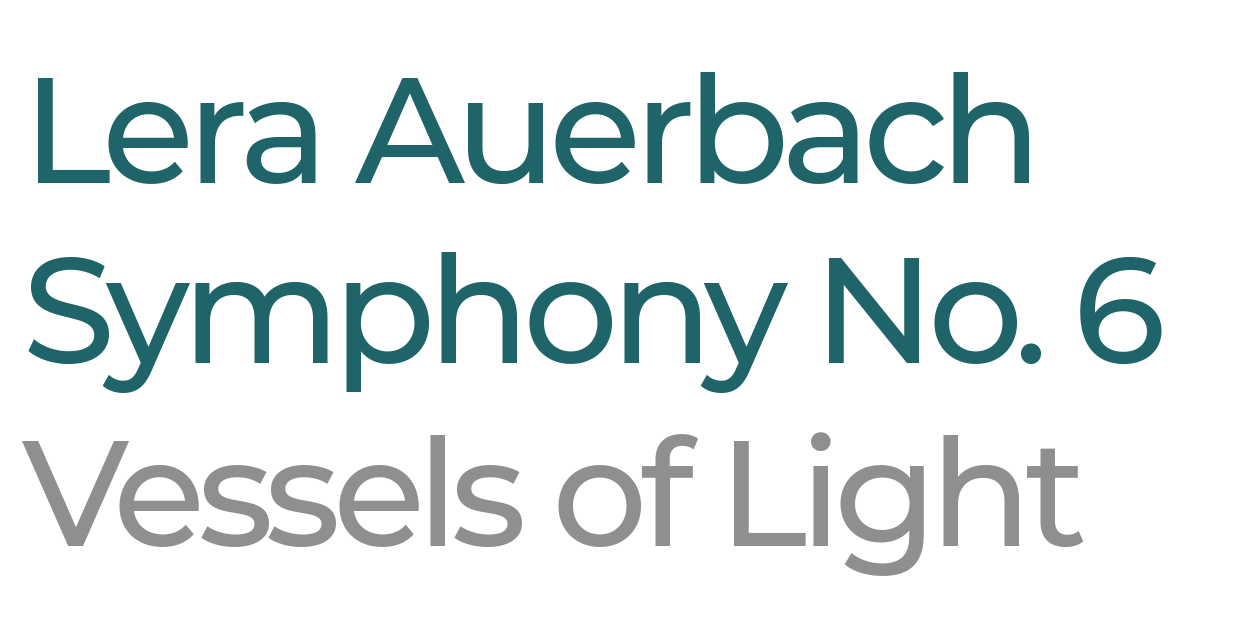UNDER CONSTRUCTION
CONTENT SUBJECT TO CHANGE
In conjunction with the concept underlying her Symphony No.6 “Vessels of Light,” Lera Auerbach conceived the creation of the sculpture “Silent Psalm.”
Art and music in context
A central component of the Symphony “Vessels of Light” that also transpires into the sculpture “Silent Psalm” is the biblical Psalm 121 of David, the song of ascents I lift my eyes to the mountains – where does my help come from? So often used as a talisman for travelers – an amulet of protection, the Psalm appears as a theme of the Symphony, set for a Capella choir.
“After completing the Psalm, I “shattered” it; its fragmented musical material – without words – appears in the interludes, with the solo cello in a binding embrace that holds the different poems (parts) together, making them stronger, and creating a sense of unity,” explains Auerbach. In the composition for cello, orchestra, and choir, the Psalm remains silent – it is not sung. A metaphor of the unspeakable, fragmented, and in shards, it is dedicated to the savior and reappears as an engraving in Hebrew on the sculpture.
“Vessels of Light” was commissioned to commemorate the righteous actions of Japanese Diplomat Chiune Sugihara (1900-1986), who, defying orders as the vice-consul of Japan in Kaunas, Lithuania, during World War II, issued transit visas through Japanese territory to persecuted Jews fleeing Europe, and saving thousands of lives. Honored by Yad Vashem, The Righteous Among the Nations are non-Jews who took significant risks to save Jews during the Holocaust. The rescue took many forms, and the Righteous came from different nations, religions, and walks of life. What they had in common was that they protected their Jewish neighbors at a time when hostility and indifference prevailed.
“Silent Psalm” finds common threads of thought in the Hebrew concept of Tikkun Olam (repair of the world) and the Japanese Kintsugi (golden joinery), also known as kintsukuroi (golden repair). Used to repair pottery, the technique mends the areas of breakage with lacquer, dusted, or mixed with powdered gold. Rather than masking the scars of breakage, they are illuminated, enhancing the beauty and uniqueness of the object. The sculpture is crafted as a bronze sheet of music, with Auerbach’s original music for the 121st Psalm, and its text is engraved in Hebrew. Broken in chards and repaired with Kintsugi, it exposes its cracks – a golden thread in the shape of a Magen David (Star of David) appears.
In the Symphony, the solo violoncello’s voice becomes Kintsugi’s golden glue. The interludes feature male and female whisperers, who appear from within the rows of audiences, symbolizing different people and stories woven together, helping to connect the broken parts – and allowing them to become whole. Librettos from Yiddish poets are sung in Yiddish, reminding us of our heritage and creating an arch of history. The violoncello represents that mystical “string” that unites the Jewish people who, scattered around the world, remain mysteriously and multiculturally connected.
Curatorial Text by Ilona Oltuski
